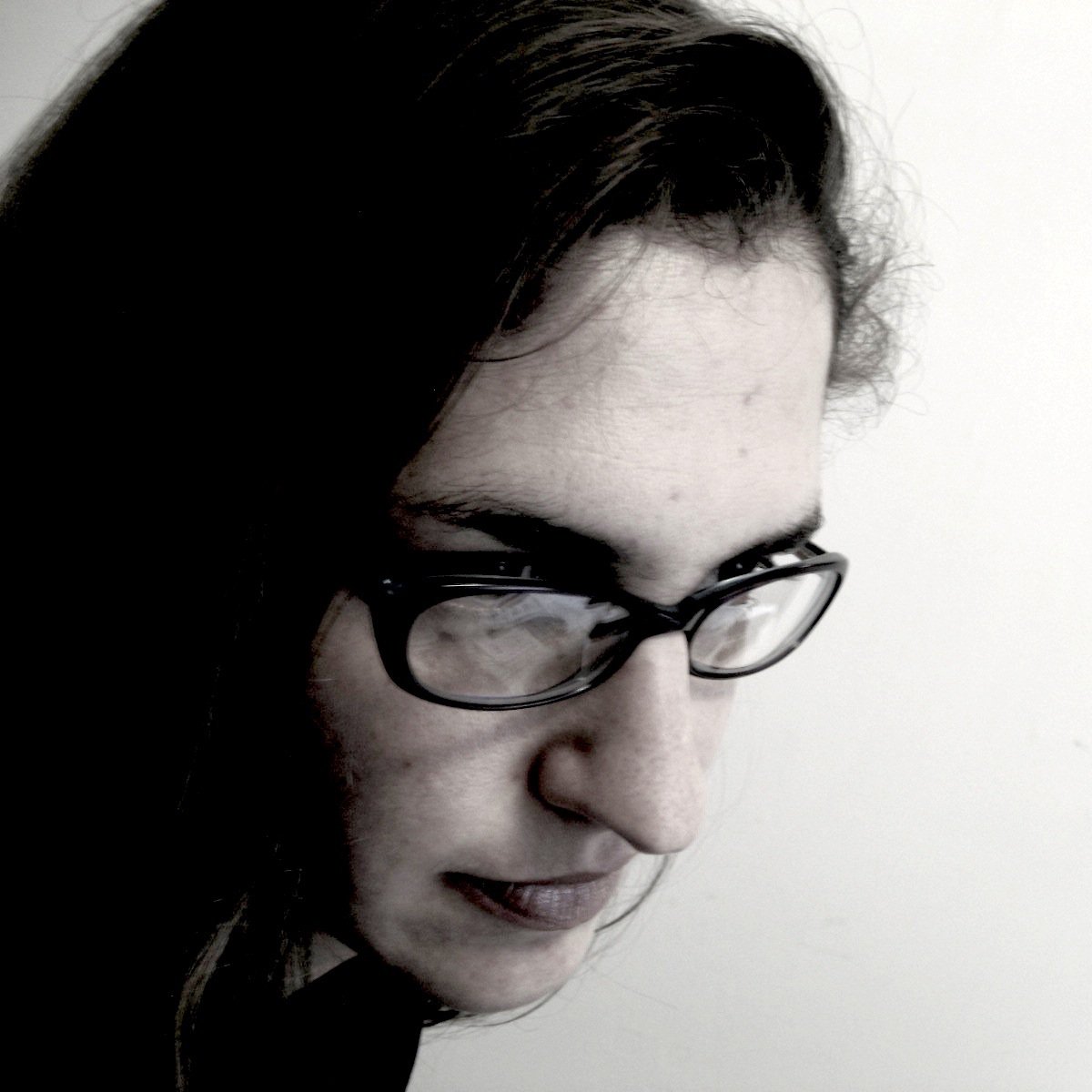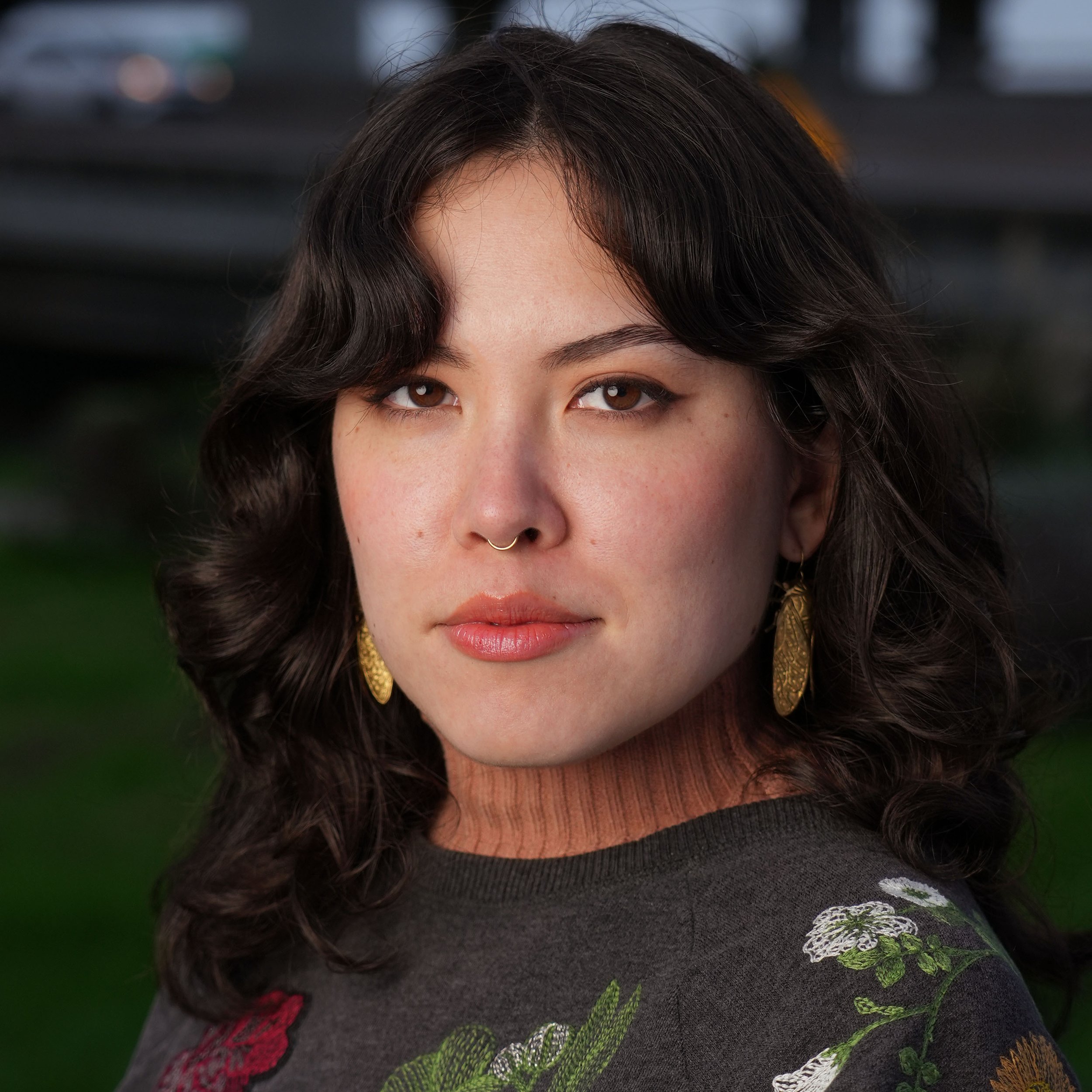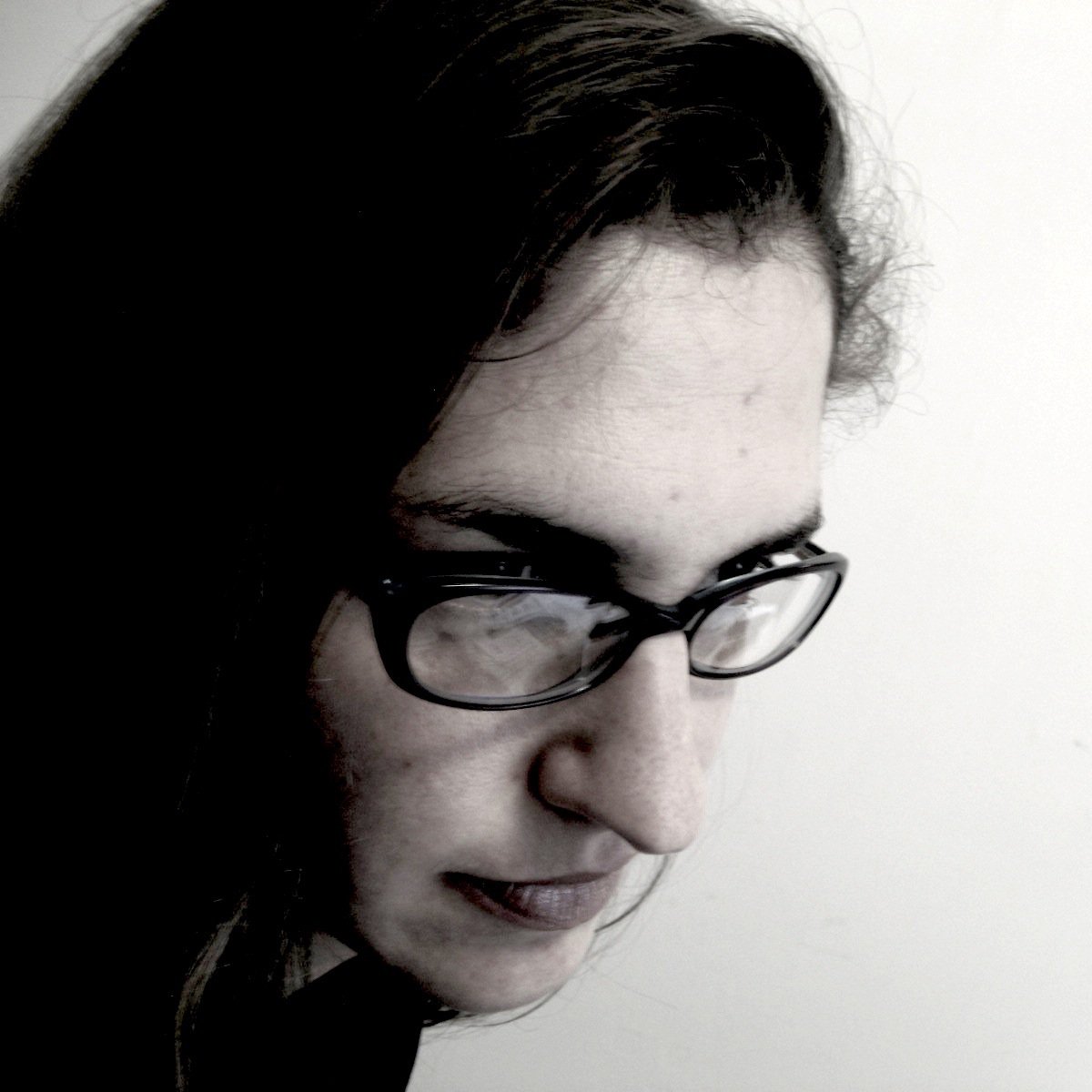The Short Reach of Long COVID Care
Illustration by Michelle Perez for palabra
Latinos and African Americans suffer the nation’s highest rates of long COVID. Yet systemic health care inequality and poor outreach have resulted in clinics with mostly white patient lists
Editor’s note: This story was co-published with WHYY’s The Pulse, and was supported by The Commonwealth Fund.
In an afternoon talk this spring, Ashley Cheng addresses a small group inside the East Harlem Neighborhood Health Action Center. She focuses on something few people seem to want to address these days: “We're here to talk about the latest information about COVID, variants, how to access the latest vaccines, long COVID and misinformation that you may be hearing.”
Cheng is a vaccine uptake project coordinator for a New York nonprofit. She’s on a mission to keep COVID-19 in the minds of vulnerable people in communities where health care is hit-and-miss and misinformation tends to run rampant.
“People are beginning to think life is normal again,” attendee Maureen Ebron, who has had eight heart attacks and has a pacemaker, tells the group. “Some people will have (COVID-19) and won't even take a test. They just gonna call it a cold, because they don't want to deal with it. It's scary.”
Cheng’s employer, the nonprofit Public Health Solutions, hosts public education sessions throughout the city, and is the only entity providing long COVID education in East Harlem, a community dominated by the two ethnic groups — 50% of the neighborhood population is Latino and 31% is Black — with the nation’s highest rates of long COVID.
New York City has three public COVID-19 Centers of Excellence treating anyone with COVID-19 and long COVID, regardless of their ability to pay. There are private long COVID clinics as well, run by hospitals like NYU and Mt. Sinai.
But many New Yorkers have no idea that long COVID care is even available.
It’s the same in other cities across the country.
‘I didn't even know this existed. If there's people who specialize in COVID care, I should absolutely be seen by them. They may have information that can help me get far better than what I've gotten in three years. Wow. Never even been referred. Never.’
Despite long COVID hitting communities of color the hardest, most long COVID clinics treat majority white patient populations. Last fall, Mt. Sinai was one of nine clinics awarded federal grants of $5 million over five years for their East Harlem clinic, which the hospital said will expand access to care for people of color. Yet despite months of requests for this story, Mt. Sinai hasn’t provided information on the new clinic’s patient demographics or documentation on the federal funding. And in response to a Freedom of Information Act request for details of the grant funding to Mt. Sinai, the U.S. Department of Health and Human Services sent me a heavily-redacted set of documents that included only publicly available information.
There is no research yet on why people of color have such high rates of long COVID. The answer is likely a combination of overrepresentation in essential worker jobs (causing higher COVID-19 rates early in the pandemic), pre-existing barriers to health care, lack of health insurance and the absence of public information campaigns on the risks of long COVID. Dr. Monica Verduzco-Gutierrez — who suffers from long COVID and runs a long COVID clinic in San Antonio, Texas — tells me that low cultural competency among physicians contributes to inadequate diagnoses of long COVID in Black and Latino communities.
A list of questions
At the Public Health Solutions seminar, Maureen Ebron, whose daughter and granddaughter suffer from lingering health problems after contracting COVID-19, has come to Cheng’s session armed with questions: “Can you get reinfected while you’re already having symptoms of long COVID?” she asks.
Definitely, Cheng responds. “You can get re-infected with COVID again however many times.”
Cheng’s colleague Mike Hernández jumps in. “We've only begun to start studying the effects of long COVID and how to treat long COVID,” he says, explaining that there’s no consensus on what causes the illness or even how to diagnose it. “(Physicians) just might attribute it to, ‘You're fine. Go see somebody else.’ Or what's worse, they just may say, ‘You're getting old. That's what happens. Your joints hurt. You have difficulty engaging in physical activity like you did before.’”
“No,” Hernández adds, emphatically. “It's happening to younger people as well.”
“I want to be honest with you,” Hernández continues telling the group. “There is no treatment. But there are things that they can do to try to help alleviate it. For the brain fog, there are some memory skills to try to help that. The worst thing we can do is just let something continue on without having it taken care of.”
Ebron picks up the thread, adding that she was surprised to learn that physicians can address specific long COVID symptoms. “Brain fog — I never knew that there was stuff that they do for that,” she says. “I'm like: you have long COVID, you're stuck with it. A lot of seniors just think it's part of their regular (issues with) heart, diabetes, asthma. That information does need to get out to us in the community.”
Illustration by Michelle Perez for palabra
The information gap
Sabrina Moye is among those lost in the information gap. The 46-year-old of Puerto Rican and African American heritage was diagnosed with long COVID in 2021. (Long COVID is new or worsened health problems lasting or developing more than three months after a COVID infection. The illness can affect the digestive tract, the brain, the heart, blood vessels, blood sugar levels, and many more parts of the body. Experts have identified more than 200 different long COVID symptoms.)
When I ask during a Zoom call if she’s been seen at a long COVID clinic, Moye says, “I don't know that we have long COVID care in New York City. I don't know that we have a long COVID clinic because I've never even been referred to one. I've only been seen by my pulmonologist and my (primary care physician).”
When I tell Moye that there are multiple long COVID clinics in the city, she’s floored — and incensed. “I didn't even know this existed. If there's people who specialize in COVID care, I should absolutely be seen by them. They may have information that can help me get far better than what I've gotten in three years. Wow. Never even been referred. Never.”
Moye’s experience illustrates how lack of public information about the illness, about how to prevent it, and about how to find care in New York City, has hindered people of color. To begin with, there is very little public information that could help people defend themselves from — or cope with — long COVID. Add to this an already unequal distribution of health care that’s aggravated by language barriers or social reluctance to engage mainstream health clinics. The void is even more alarming given that Moye works for the nonprofit running the East Harlem COVID health information session. And she knows COVID-19 all too well: Moye lost relatives on both sides of her family in the pandemic.
‘I just thought it affected everybody in the same way. If this is affecting one population and not the other, what resources were provided to one group and not the other?’
In August 2021, Moye, who is asthmatic, was a frontline employee for a public health organization. Within days, she became deathly ill: “COVID just did not agree with my body. I ended up in the hospital: 12 blood clots. Partial lung collapse. Pneumonia, of course, in both lungs. Glucose levels were through the roof. I ended up with sepsis.”
Following her encounter with acute COVID-19, Moye’s life was transformed. “Everything was opposite of who I had been up until that point. Couldn't stand on my own, couldn't bathe myself on my own. I'm still pretty young. I didn't expect to be in that space.”
Today, Moye deals with a list of overwhelming symptoms: “I still have headaches. I'm still often on oxygen. I still can only walk three blocks. I still have the lethargy, this extreme exhaustion. My immune system is still compromised. I still have days with the muscle weakness. I still can only walk three blocks. I still can't go up and down the stairs without losing breath or getting winded. I'm on a steroid inhaler — and strong doses. It's just never ending. It's always something. I'm like, ‘Okay, what else do I do at this point?’”
Then, in 2022, Moye was reinfected. “COVID really did a number on me. My doctor said to me, ‘Hey, please, let's try to keep you COVID-free for a year. I don't know that your lungs can actually take it again.’”
She still struggles to keep up with the day-to-day of parenting and her job; she works from home, which she’s able to do under federal disability law. “I have been on a reasonable accommodation ever since (getting COVID-19),” she says. “Fighting to try to get back to some sense of normalcy, and get back to work, and get back in the office, and get back to doing things that I love doing at one point. It's just been hard. I can have good days and then I have horrible days. Before would be good day, bad day. Now it's either good or horrible. There's no in between.”
An unequal burden
Despite her debilitating symptoms, which include needing oxygen most days, Moye has not been seen by a long COVID specialist. This is a failure of care experienced by many Latinos with long COVID, who either aren’t informed by their doctors about long COVID clinics, or are unsuccessful in their attempts to be referred to the clinics. In fact, Moye’s receives care at Mt. Sinai Hospital, which just opened its third Manhattan long COVID clinic — in East Harlem, where Moye lived until very recently.
For Moye, it’s distressing to learn that Latinos and African Americans are hardest hit by long COVID and yet face high barriers to care. “I just thought it affected everybody in the same way. If this is affecting one population and not the other, what resources were provided to one group and not the other? It just makes me wonder, what is it within our care — or what is it that's not being done — that we end up with carrying the burden of it all?”
Illustration by Michelle Perez for palabra
Moye has a message for other people of color with long COVID: “They're not alone in this,” she says. “(Long COVID) does exist. Don't ignore those things that are lingering, that you may just say, ‘Oh, it's just in my head,’ or, ‘It's just me.’ Don't allow nobody to say that it's just in your head. If you feel something, you know your body, you're living in it: Don't ignore it.”
Moye says she does her best to keep moving forward. She has accepted that she really does need oxygen, and uses an oxygen tank when she feels unwell. She’s also committed to protecting her family’s health: They recently moved out of crowded public housing to a house outside the city. Now Moye has a backyard, where she can sit in the sun. And breathe.
Lygia Navarro is an award-winning disabled journalist working in narrative audio and print, and an editor at palabra. She has reported from across Latin America, as well as on Latine stories in the United States and Europe. Lygia has reported for the CBC, The American Prospect, Business Insider, Marketplace, The World, Latino USA, the Virginia Quarterly Review, the Christian Science Monitor, The Associated Press and Afar, among other outlets. She has also worked as a podcast producer, and her work has been supported by many grants and fellowships.
Other palabra articles written or edited by Lygia Navarro: What Recovery?, ¿Recuperación?, Teaching Race in Arizona, Enseñando Sobre la Raza en Arizona, Strangers on the Shore, Doulas Teaching Doulas, Doulas Enseñando a Doulas, Trans in High School, Trans en la Preparatoria
Michelle Perez is an illustrator and designer based in Providence, Rhode Island. Raised across coasts of the United States, she grounds herself in the stories she’s carried with her along the way. Her art seeks to elevate meaningful narratives through bold linework and thoughtful compositions, bridging traditional and digital means of making. @michiperezart
Ricardo Sandoval-Palos is palabra’s founding editor. He is the public editor for PBS, an intermediary on ethics, integrity and standards between the broadcaster’s audiences and its creatives and journalists. Ricardo is an award-winning investigative reporter and editor. His reporting in Latin America earned awards from the Overseas Press Club and the InterAmerican Press Association. He’s also co-author of the biography, “The Fight In The Fields: Cesar Chavez and the Farmworkers Movement.” @ricsand
Other palabra articles edited by Ricardo Sandoval-Palos: The Heavy Toll, A Toxic Trail, Show Us Your Papers, The Game Changer, On Higher Ground, Chicano (Park) Power, Greenlighting Latinidad, A Volcanic Comeback, Whose Gold?








